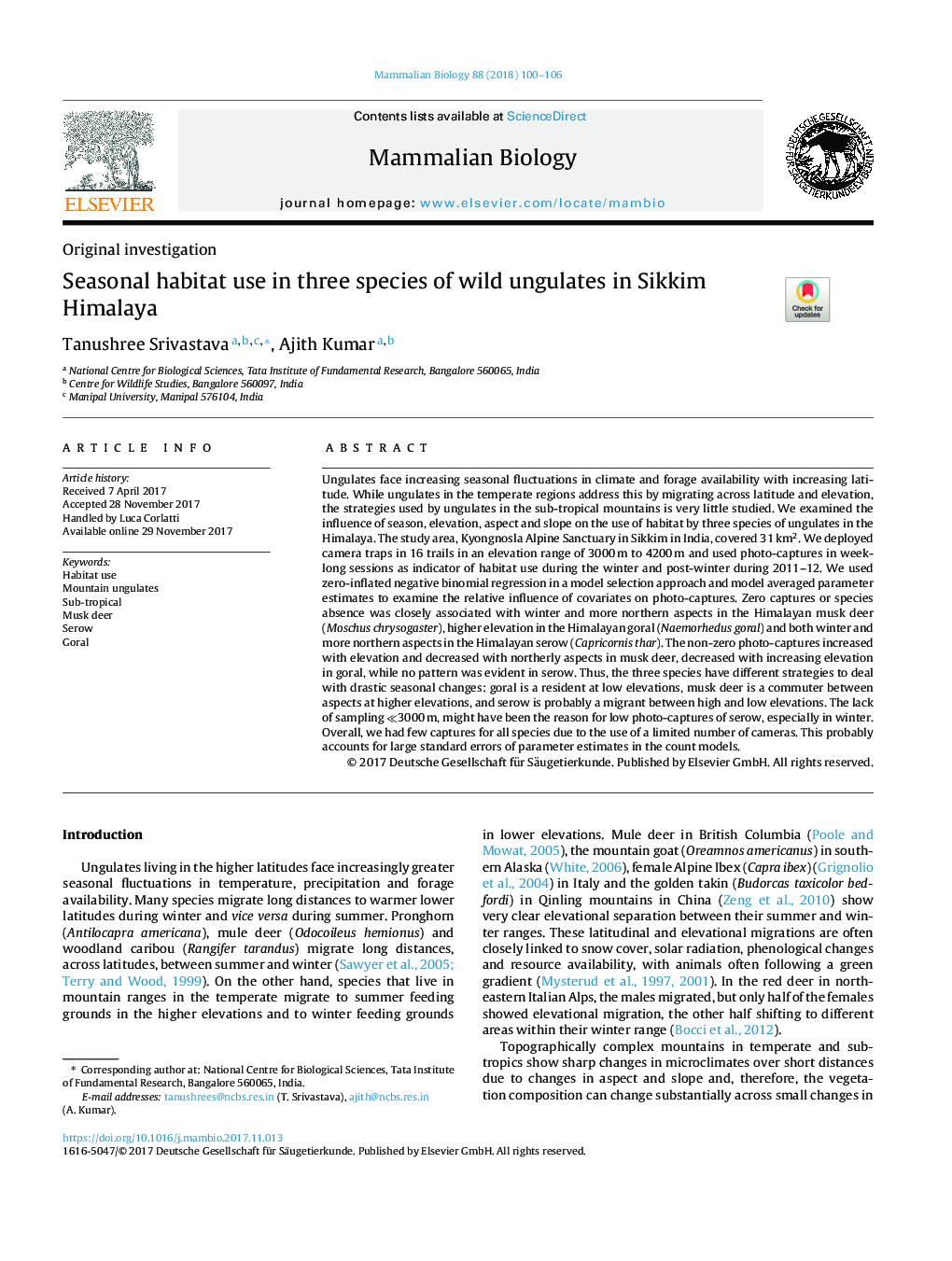| کد مقاله | کد نشریه | سال انتشار | مقاله انگلیسی | نسخه تمام متن |
|---|---|---|---|---|
| 8475768 | 1550459 | 2018 | 7 صفحه PDF | دانلود رایگان |
عنوان انگلیسی مقاله ISI
Seasonal habitat use in three species of wild ungulates in Sikkim Himalaya
دانلود مقاله + سفارش ترجمه
دانلود مقاله ISI انگلیسی
رایگان برای ایرانیان
موضوعات مرتبط
علوم زیستی و بیوفناوری
علوم کشاورزی و بیولوژیک
علوم دامی و جانورشناسی
پیش نمایش صفحه اول مقاله

چکیده انگلیسی
Ungulates face increasing seasonal fluctuations in climate and forage availability with increasing latitude. While ungulates in the temperate regions address this by migrating across latitude and elevation, the strategies used by ungulates in the sub-tropical mountains is very little studied. We examined the influence of season, elevation, aspect and slope on the use of habitat by three species of ungulates in the Himalaya. The study area, Kyongnosla Alpine Sanctuary in Sikkim in India, covered 31 km2. We deployed camera traps in 16 trails in an elevation range of 3000 m to 4200 m and used photo-captures in weeklong sessions as indicator of habitat use during the winter and post-winter during 2011-12. We used zero-inflated negative binomial regression in a model selection approach and model averaged parameter estimates to examine the relative influence of covariates on photo-captures. Zero captures or species absence was closely associated with winter and more northern aspects in the Himalayan musk deer (Moschus chrysogaster), higher elevation in the Himalayan goral (Naemorhedus goral) and both winter and more northern aspects in the Himalayan serow (Capricornis thar). The non-zero photo-captures increased with elevation and decreased with northerly aspects in musk deer, decreased with increasing elevation in goral, while no pattern was evident in serow. Thus, the three species have different strategies to deal with drastic seasonal changes: goral is a resident at low elevations, musk deer is a commuter between aspects at higher elevations, and serow is probably a migrant between high and low elevations. The lack of sampling âª3000 m, might have been the reason for low photo-captures of serow, especially in winter. Overall, we had few captures for all species due to the use of a limited number of cameras. This probably accounts for large standard errors of parameter estimates in the count models.
ناشر
Database: Elsevier - ScienceDirect (ساینس دایرکت)
Journal: Mammalian Biology - Volume 88, January 2018, Pages 100-106
Journal: Mammalian Biology - Volume 88, January 2018, Pages 100-106
نویسندگان
Tanushree Srivastava, Ajith Kumar,